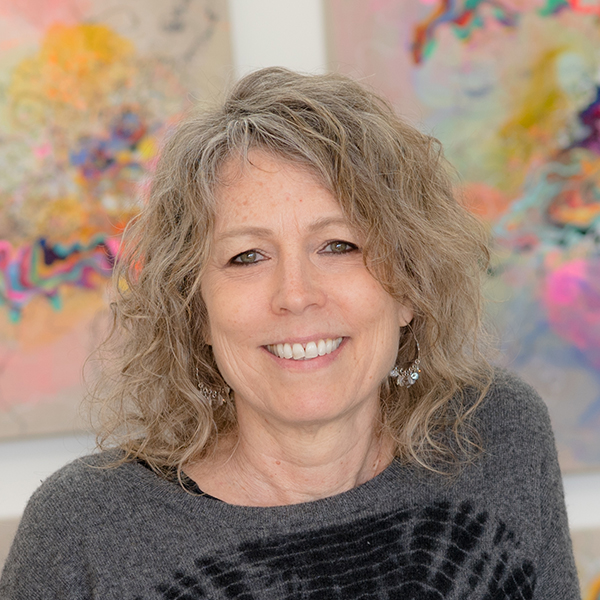
May 16, 2024
It is 1906, and in a studio in Stockholm, a woman in her 40’s is moving across giant sheets of paper spread on the floor with a paintbrush in hand while in a trance state, receiving explicit instructions from nonphysical guides on exactly what to paint – enigmatic shapes both geometric and organic, an awe-inspiring swirl of dusty mauves and orange, pale blue and lavender. Spirals and mandalas and symbols unfurl across sprawling surfaces, conjuring a mysterious and mystical cosmology, forms repeating like mantras.
Created by Hilma af Klint and members of a collective of spiritually minded women that called themselves The Five, these paintings have blown open the art world and its historical narratives about the origins of abstraction. (These paintings are now considered to be some of the earliest abstract works in Western art history). This first project eventually blossomed into 193 paintings over the next 8 years, followed by another 30 years of related paintings and drawings. That such radical and radiant works might have been made by an unknown female artist is challenging enough; that they were made in collaboration with a non-physical group of Higher Masters channeled by Hilma and her friends is a challenge to many historians and materialists. Indeed, this immense discomfort about the metaphysical process behind these paintings is still present in the current dialogue and interpretation of the work.
Af Klint was born in 1862 to an aristocratic family in Sweden and trained at the Royal Academy in Stockholm, one of the first European art schools to accept women. There she developed her skills as a traditional landscape and portrait artist, but it was her interest in the new sciences and their intersection with more spiritualist and occult ideas that catalyzed her development as a revolutionary artist.
This was an exciting time culturally, when new scientific discoveries such as atomic matter, electro-magnetic energy, and x-rays pointed towards aspects of reality that had been previously unseen, and fired the imaginations of the intellectuals and creatives of the day. Af Klint also became interested in Theosophy, a hybrid philosophy that was an amalgamation of the esoteric and mystical views of Hinduism, Buddhism, Kabbala, Egyptian Mysticism and Western wisdom traditions, and became a devotee of Theosophist (later Anthroposophist) leader Rudolph Steiner.
For almost ten years, af Klint met regularly with the Five (which later expanded to 13 women). They held seances, made automatic drawings and communicated with spirit guides through trance processes, meditation, and prayer. These sessions were meticulously recorded in notebooks. This council of transcendent guides – Amaliel, Ananda, Clemens, Esther, Georg, and Gregor – eventually offered the group a “commission” to create a large ensemble of works, The Paintings for the Temple, and af Klint accepted the call.
The visionary work that emerged from this project continues to inspire aesthetic rapture, curiosity, and deep respect. The paintings feel like doors to another dimension – not resulting from the imagination, but from deep research and esoteric processes. Hilma af Klint essentially created a complete symbolic system, one that art critic Briony Fer called “ecstatic diagrams rendering a visionary artistic process and, as such, a different order of knowledge”.
The work addresses spiritual ideas of evolution, life cycles, cosmologies, the transcendent and the embodied. Later series such as “Primordial Chaos”, “Evolution”, and the “The Atom Series” recall alchemical drawings, maps and diagrams of unknown realms, secret codes and direct observation of the natural world. There are multiple forms and references, from the scientific to the occult across times and cultures.
In a description from her journals of the process, af Klint says “The pictures were painted directly through me, without any preliminary drawings and with great force. I had no idea what the paintings were supposed to depict, nevertheless I worked swiftly and surely, without changing a single brushstroke”. She was also told by her spirit guides “You will announce a new way of understanding life, and yourself be a member of the new era, your efforts will prosper, your work will break ground for others who will follow”.
af Klint was never fully recognized for her work during her lifetime and has only recently been given the institutional and public support that she deserves. She understood that the world was not ready for her work and requested that it not be exhibited until 20 years after her death. It would be another 40 before they were seen in their full glory.
The exhibition at the Guggenheim in 2018 was the museum’s most well-attended show in its history.
She knew her work was for the Future, and we are it.
In addition to this conceptually radical, beautiful, and mysterious taxonomy of the unknown, we are left with questions and provocations about the nature of creativity and agency, imagination and inspiration, about the intersection of feminism and spirituality, and the nature of consciousness and Reality itself.
-Jackie Tileston
* Special thanks to Hedvig Martin-Ahlén for her generous insights into Hilmas life and work
